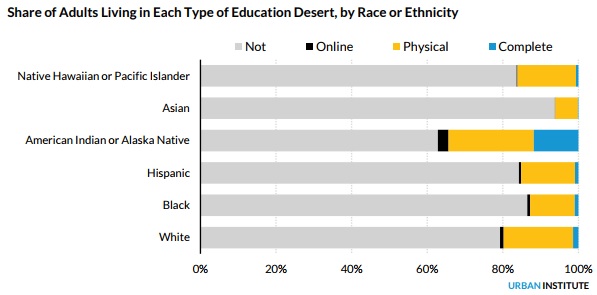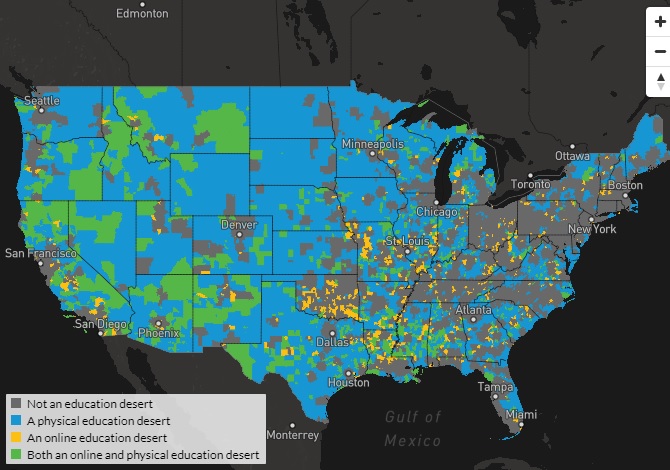You have /5 articles left.
Sign up for a free account or log in.
Roughly three million Americans live more than 25 miles from a broad-access public college and do not have the sort of high-speed internet connection necessary for online college programs, according to a new report from the Urban Institute's education policy program.
The institute used data from the U.S. Department of Education and the Federal Communications Commission to identify these education "deserts," cross-referencing that information with data from the Census Bureau to determine who lives in them. The report found that 17.6 million adults live in a physical higher education desert, with 3.1 million (1.3 percent of adults in the U.S.) lacking access to online and physical college programs.
The report also tracked the demographics of people who live in education deserts.
"This study demonstrates what many Native Americans, rural Americans and other Americans living in education deserts already know: the internet has not untethered all of us from our geographic locations," said the report. "As long as broadband access depends on geography, place still plays an important role in access to higher education."








